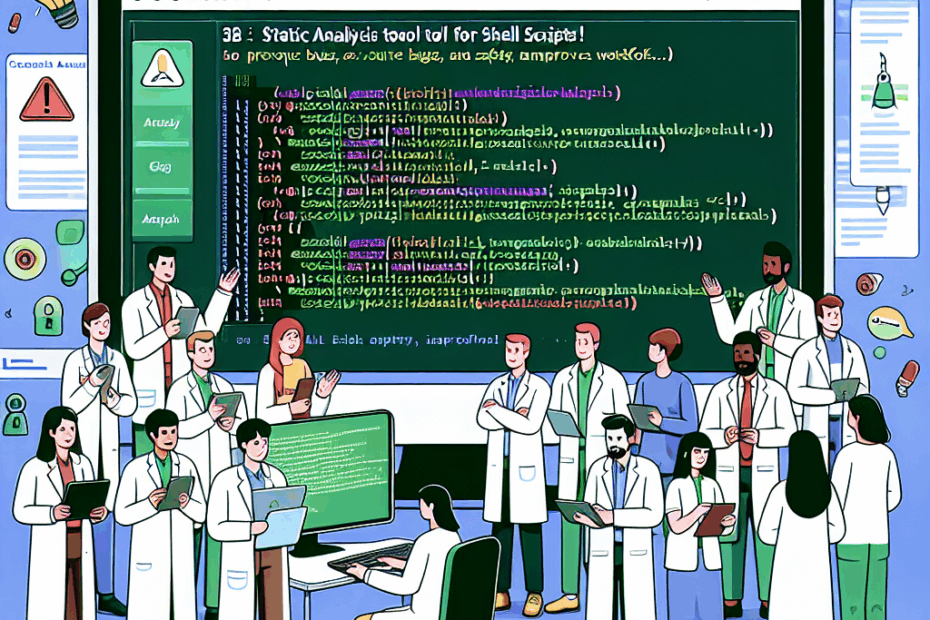“`html
Making Shell Programs Safer: A New Way to Catch Bugs Before They Cause Trouble
Imagine you’re building a house. You’d want to check the blueprints carefully before you start hammering, right? Well, a group of clever researchers is working on a way to do something similar for computer programs, specifically those written for Unix, Linux, and macOS systems (think of these as different types of operating systems, like different brands of phones).
They want to make sure these programs are safe, don’t have hidden bugs, and do exactly what they’re supposed to. This is a tricky task because of something called “pervasive dynamicity” and “opaque, polyglot commands.”
Lila: John, what do those terms even mean? “Pervasive dynamicity” and “opaque, polyglot commands”?
John: Great question, Lila! Think of “pervasive dynamicity” as meaning that things can change unexpectedly while the program is running – like a surprise rainstorm that changes your building plans. “Opaque, polyglot commands” are like using building blocks from different sets that don’t always fit together perfectly and you can’t easily see inside.
Why Is This Important?
These researchers, from universities like Brown and UCLA, point out that shell programming (that’s the kind of programming they’re focusing on) is still super common. Shell programs are like the glue that holds many computer systems together. Even cool things like CI/CD are often built using shell scripts.
Lila: CI/CD? What’s that?
John: CI/CD stands for continuous integration and continuous delivery. Imagine a factory that’s constantly building and improving a product. CI/CD is similar, but for software. It’s a way to automatically build, test, and release updates to software, making the process faster and more reliable. Shell scripts are often used to automate these processes.
The problem is that the shell language is a bit quirky. Even experienced programmers can make mistakes, and these mistakes can be a real headache. At best, a buggy shell program might just crash. At worst, it could mess up your data, damage your system files, or even make your entire computer unusable!
The Solution: Static Analysis to the Rescue!
The researchers want to bring the benefits of “semantics-driven static analysis” to shell programming. It sounds complicated, but the idea is simple: to check programs for errors *before* they’re run.
Lila: Semantics-driven static analysis? That sounds super technical!
John: It does sound intimidating, but let’s break it down. “Static analysis” means checking the code without actually running it, like proofreading a document before printing it. “Semantics-driven” means it goes beyond just checking for typos; it tries to understand what the code *means* and whether it will actually do what it’s supposed to. Think of it like having a super-smart editor who understands the meaning of your words, not just the spelling.
This would be a huge win for anyone using Linux, macOS, or even Windows Subsystem for Linux (WSL) – basically, anyone who uses the shell.
How Would It Work?
The researchers envision different types of checks working together. For example, one check might focus on how the program interacts with the file system (where your documents and photos are stored), while another might look at how different parts of the program communicate with each other.
The goal is to give programmers clear warnings about potential problems *before* they run the program, just like modern programming languages do.
The Future of Safer Shell Programs
The researchers are actively building the tools they need to make this vision a reality. They’re creating things like a “stream reasoning engine” and a “symbolic execution engine.”
Lila: Uh oh, more jargon! What are those engines?
John: Okay, let’s simplify that! A “stream reasoning engine” is like a detective that follows the flow of information through the program to spot clues about potential problems. A “symbolic execution engine” is like a simulator that tries out different scenarios in the program to see if it breaks. Think of it like testing a bridge by virtually driving different types of trucks across it before real cars use it.
They’re also working on a special language to describe how Unix and Linux commands should behave, so the computer can automatically check if the program is following the rules.
What Can You Do Right Now?
In the meantime, the researchers recommend using a tool called “shellcheck.” It’s not as powerful as the semantic analysis they’re working on, but it can still catch many common errors in shell scripts.
They also suggest using the “try” tool, which can limit the damage if a mistake does happen. It’s like having a safety net that prevents a small error from turning into a major disaster.
My Thoughts
John: I’m really excited about this research. Shell scripts are incredibly useful, but they can also be a source of frustrating bugs. Having better tools to catch these bugs before they cause problems would be a game-changer.
Lila: As someone new to all this, it sounds like a great way to make programming less scary and more reliable!
This article is based on the following original source, summarized from the author’s perspective:
Static analysis proposed for shell programs
“`
